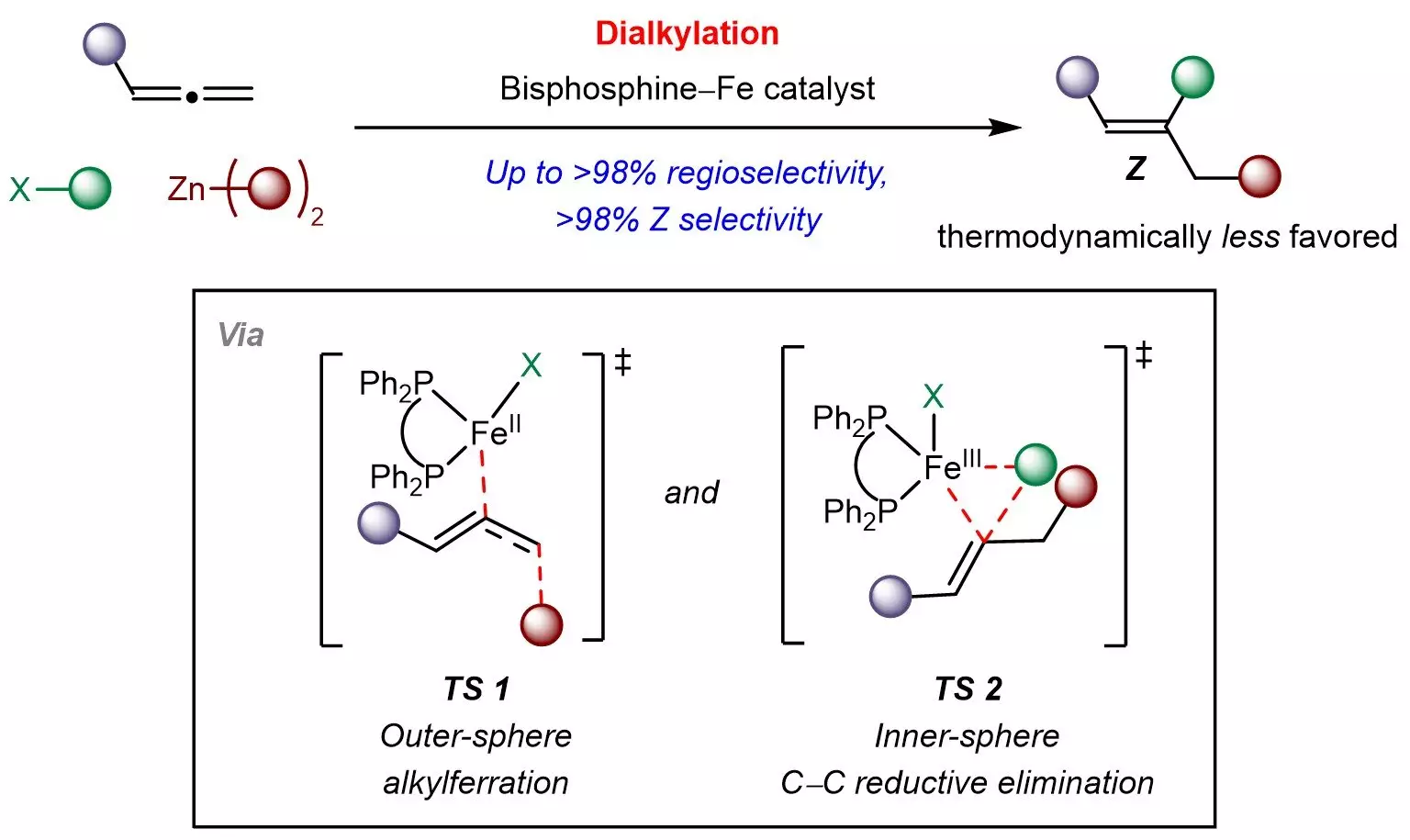Researchers at the National University of Singapore (NUS) have made significant strides in the field of organic chemistry with the development of a novel iron-catalyzed method for the synthesis of trisubstituted Z-alkenes. Published in the esteemed journal Nature Synthesis, this research addresses a critical challenge in sustainable chemical practices—the efficient synthesis of selectively Z-isomerized alkenes. Trisubstituted Z-alkenes are pivotal in the formation of biologically active molecules and serve as essential intermediates in various stereospecific reactions, particularly those that produce sp3-hybridized structures.
Traditionally, synthesizing Z-alkenes has been fraught with difficulties, primarily due to their inherent thermodynamic instability compared to their E-isomer alternatives. This instability poses a barrier to selective production, necessitating innovative solutions within catalytic processes to control reaction kinetics effectively. The technology introduced by the NUS team, under the guidance of Associate Professor Koh Ming Joo, leverages readily available iron catalysts, demonstrating that economical and safe materials can contribute to advanced synthetic methodologies.
The newly devised method employs a multicomponent reaction framework that integrates allenes with sp3-hybridized organohalides and organozinc reagents. This approach allows for the strategic addition of diverse alkyl groups to the allene while not only gaining site selectivity but also achieving the desired Z-configuration. The use of a bisphosphine-iron catalyst amplifies both environmental and economic benefits, establishing a “green chemistry” paradigm that prioritizes sustainability by utilizing non-toxic, abundant materials in chemical synthesis.
Adding to its significance, the research team applied their iron-catalyzed method to synthesize a glucosylceramide synthase inhibitor, highlighting the necessity of the Z-configuration for its bioactivity. This application not only underscores the practical implications of their findings but also reveals the method’s potential in drug discovery efforts where precise molecular architecture is essential.
Prof. Koh’s insights extend beyond mere synthesis; the team advocates for a transformative mechanism involving outer-sphere radical-mediated alkylferration, followed by inner-sphere carbon-carbon bond formation. Understanding such mechanisms not only sheds light on existing limitations within the field but also opens doors for advancements in designing kinetically controlled reactions involving allenes and other π-systems.
This research signifies a noteworthy leap in the realm of organic synthesis, bridging gaps that have long hindered scientist endeavours in accessing desirable chemical structures. With plans to build upon these foundational insights, the team is actively seeking to explore additional multicomponent transformations that can further convert readily available raw materials into high-value chemicals, thereby enhancing industrial applications and fostering sustainable practices.
The work conducted by the NUS chemists represents a significant contribution to the field of sustainable chemistry, emphasizing the importance of innovative and economically viable methodologies in the ongoing quest for efficient chemical synthesis. Their findings not only enrich academic literature but also potentially revolutionize practical applications in pharmaceuticals and beyond.


Leave a Reply